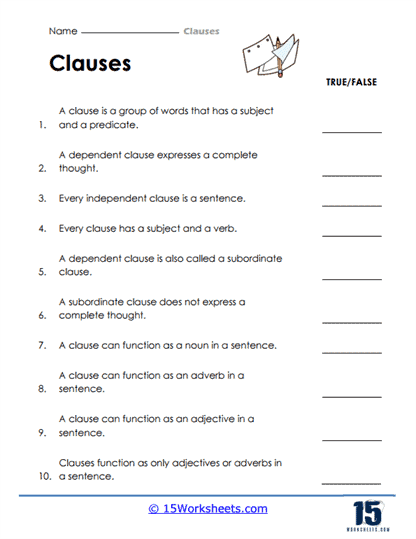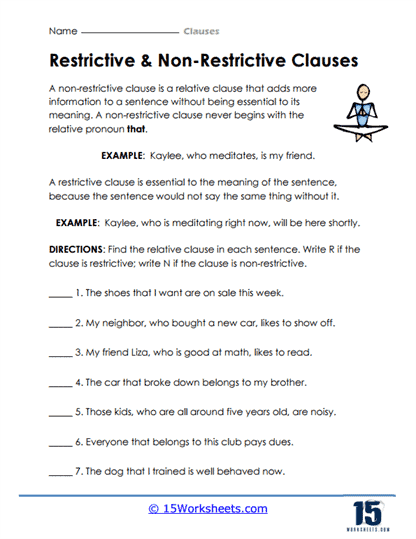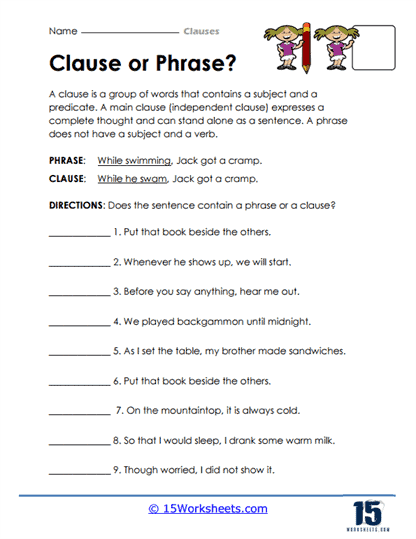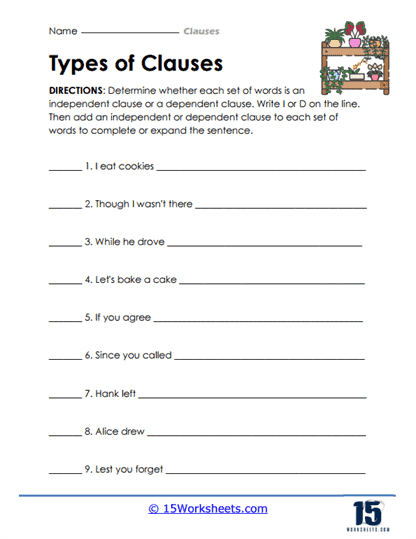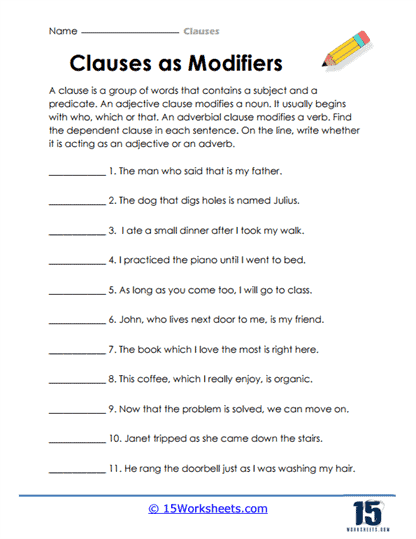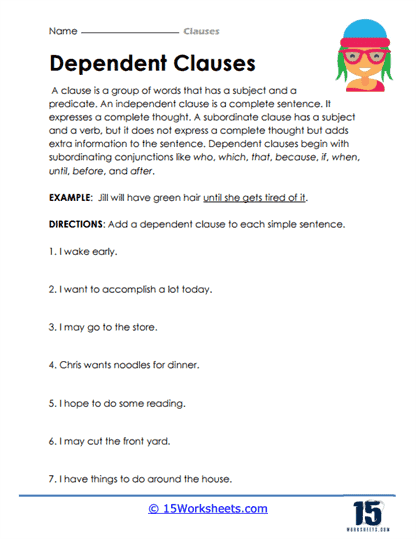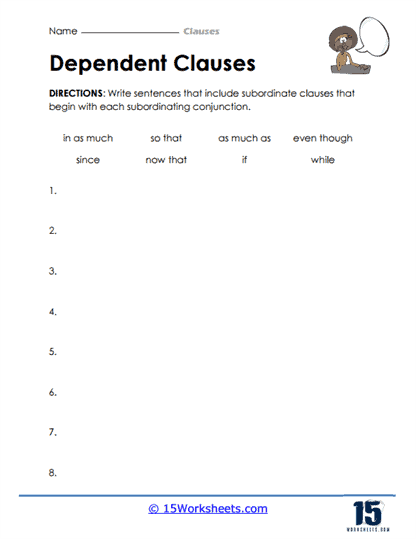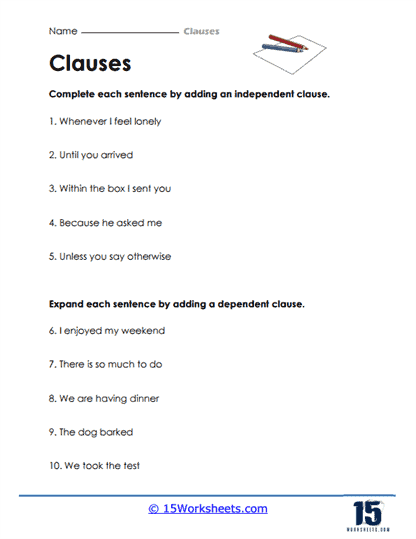Clauses Worksheets
All About These 15 Worksheets
Clauses are groups of words that contain a subject and a predicate (verb). Understanding how clauses work is fundamental to understanding sentence structure, punctuation, and grammar overall.
These worksheets center on 3 primary types of exercises:
Identification – Where students identify whether a clause is independent or dependent.
Combination – Where students are given independent and dependent clauses and must correctly combine them into full sentences.
Correction – Where students are given incorrectly punctuated sentences containing clauses and must correct them.
How Do You Identify a Clause in a Sentence?
There are two main types of clauses: independent and dependent clauses.
Independent Clauses – An independent clause can stand alone as a sentence because it expresses a complete thought. Here’s how you can identify an independent clause:
1. Look for a group of words that contains a subject and a verb and expresses a complete thought.
2. See if the clause can stand alone and make sense.
Examples:
“She runs every morning.” (Subject: She, Verb: runs)
“I love pizza.” (Subject: I, Verb: love)
Dependent Clauses – A dependent clause cannot stand alone as a sentence because, even though it has a subject and a verb, it does not express a complete thought. It usually begins with a subordinating conjunction (like because, if, when, although) or a relative pronoun (like who, which, that).
To identify a dependent clause:
1. Look for a group of words with a subject and a verb that does not express a complete thought.
2. See if the clause begins with a subordinating conjunction or a relative pronoun.
3. Check if the clause can stand alone. If it can’t, it’s likely a dependent clause.
Examples:
“Because she wakes up early.” (Subject: she, Verb: wakes up. This doesn’t express a complete thought.)
“When I eat too much.” (Subject: I, Verb: eat. This also doesn’t express a complete thought.)
Both independent and dependent clauses can be found in complex and compound sentences. For instance, in the sentence, “She runs every morning because she likes to stay fit,” “She runs every morning” is an independent clause, and “because she likes to stay fit” is a dependent clause.
Other Types of Clauses
We have worksheets that specifically focus on these other types. Click the link on each below to visit those worksheet sets.
Relative Clause (or Adjective Clause) – A type of dependent clause that functions as an adjective, meaning it modifies a noun or a pronoun. Relative clauses usually start with relative pronouns like who, whom, whose, which, or that.
Example: “The girl who lives next door plays tennis.” Here, “who lives next door” is the relative clause modifying the noun “girl”.
Noun Clause – A type of dependent clause that functions as a noun. Noun clauses can act as the subject, object, or complement in a sentence, and often begin with words such as that, what, why, who, how, etc.
Example: “What you said was surprising.” Here, “What you said” is the noun clause acting as the subject of the sentence.







